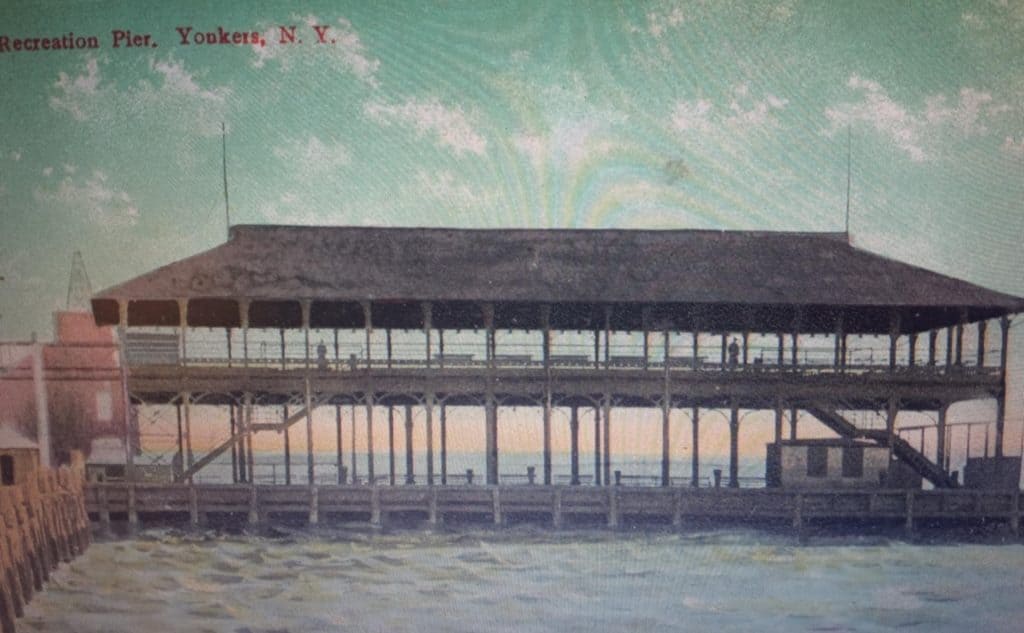
By Mary Hoar, President Emerita Yonkers Historical Society, and
President Untermyer Performing Arts Council
Monday, May 30th
May 30, 1872: Thomas Ludlow led opposition to incorporating Yonkers as a city, presenting a strong protest signed by Yonkers residents to NYS Governor John Hoffman. According to Ludlow, the majority of the people who lived outside the Village of Yonkers were opposed to incorporation. Outside the village, Yonkers was mostly farmland with very few buildings.
They resented the lack of consultation, believing this was “against the spirit of our institutions that any portion of the people of this State shall be subjected to an entire change in the form of their municipal government without some authorized expression of the will of the people to be affected thereby on that subject.”
Others signing the petition were Richard Lawrence, H. M. Schefflen, John Taylor, Thomas Radford, Thomas Knowlton, B. T. Weeks, G. A. Rollins and Henry Williams. Also expressing displeasure were the well-known names of Shonnard and Saunders, who claimed incorporation was a scheme of just 3 men and did not reflect the opinion of the majority of Yonkers people.
Tuesday, May 31st
May 31, 1949: Ninety-one year old Christina Rein, widow of Civil War veteran John Rein, was honored at a dinner party held at Fanshaw Restaurant on South Broadway.
May 31, 1995: After Beczak Environmental Center, Ferry Sloops, Friends of the Old Croton Aqueduct, Hudson Communities Coalition, Ludlow Park Homeowners Association, Tuc-Loc Civic Association, Untermyer Performing Arts Council, Yonkers Audubon Society, Yonkers Cub Scout Pack 32, Yonkers Boy Scout Troop 42 and the Yonkers Department of Parks, Recreation and Conservation joined together to “spruce up” Untermyer Park, the group was treated to a lecture by Landscape Architect Ralph Crosby, a tour of the Untermyer Park, light music and refreshments!
Wednesday, June 1st
June 1, 1946: After carefully reviewing his exam, the Yonkers Civil Service Commission determined Fire Lieutenant Thomas Barden, instead of failing the exam for Captain, actually scored third in the exam. Barden, failed by an unidentified examiner, someone who had prepared, conducted and marked “previous official examinations.” The Commission had to answer City Manager Montgomery’s request for clarification. Member Bernard Silverman, Commissioner Horace Gray and Director Joseph Crowley explained to Montgomery the Examiner, after marking the tests, gave an answer key to the examination. After Barden appeared before the Commission to appeal, the group carefully reviewed his test answers and came to the conclusion Barden had been incorrectly rated; he actually placed third. The examiner’s poor rating cost Barden the captaincy as the position was given to someone else. Instead, two men who scored lower were promoted. Barden refused to comment, but his friends said the Lieutenant got a “raw deal.”
Once a nationally ranked track star, Barden qualified for the 1916 US Olympic Team but couldn’t attend; the games were canceled because of the war in Europe.
Thursday, June 2nd
June 2, 1943: “The Wind That Swept Mexico,” by Caryl Avenue author Anita Brenner, was published. An interpretation of the Mexican revolution from 1910 to 1942, it was the first English language book to present an overview of the phases of the revolution, and was called “one of the most powerful and discerning pictorial histories every published.” Written in collaboration with photographer George Leighton, the book brought a whirlwind of interviews for Brenner, including by Mary Margaret McBride and news commentator Johannes Steel. A paperback version was published in 1971, and a second edition in 1984. It remains in print today, thanks to the University of Texas Press.
Born on a ranch in Mexico, Brenner and her family were forced to flee to Texas because of the revolution as a child. After she completed her PhD at Columbia in Anthropology, she became a foreign correspondent for the NY Times and covered the Spanish Civil War and later returned to Mexico. During the 1920s and 1930s, she was part of a group of intellectuals and artists such as Diego Rivera, Jose Clemente Orozco and Frida Kahlo; as an anthropologist, reporter and cultural promoter, she become an important bridge to both worlds.
Brenner was the wife of Major David Glusker, MD, serving overseas with the Army at the time of publication, and the mother of two young children.
Friday, June 3rd
June 3, 1912: A couple of Common Council members discussed purchasing the Pocantico watershed at North Tarrytown to supplement the Yonkers Waterworks.
June 3, 1935: Several hundred dignitaries and Polish-American residents dedicated a pin-oak tree and bronze tablet in Washington Park in memory of Madame Marie Sklodowska-Curie, the Polish scientist who conducted pioneering research





